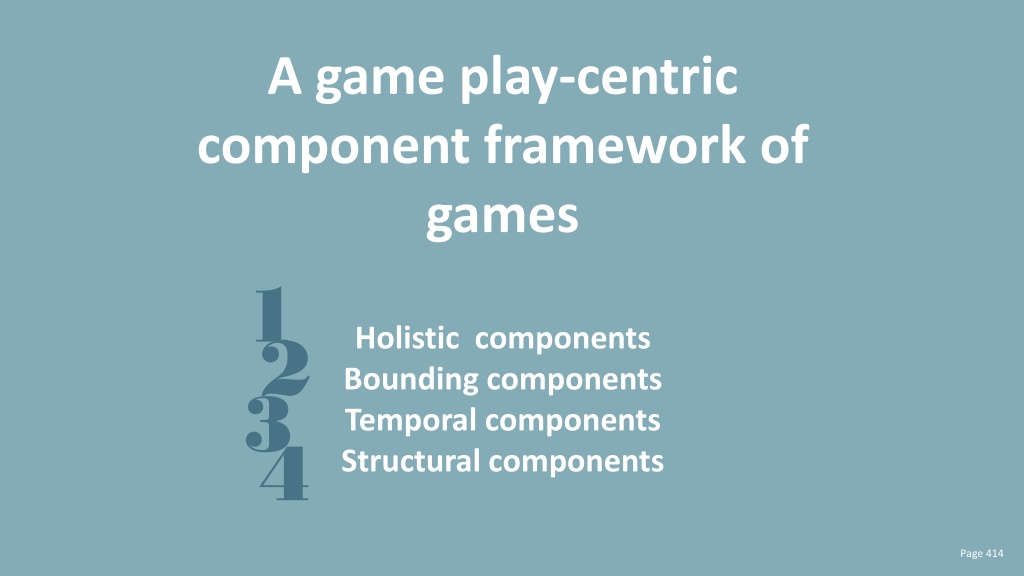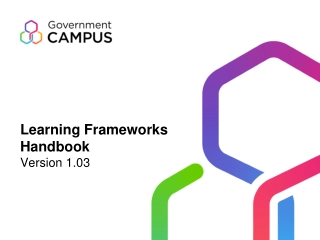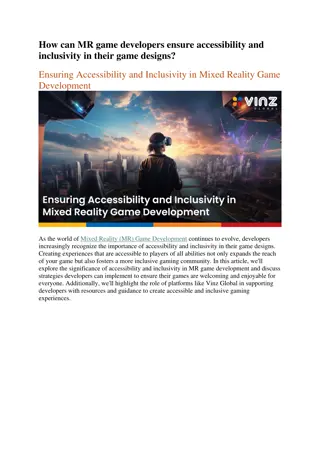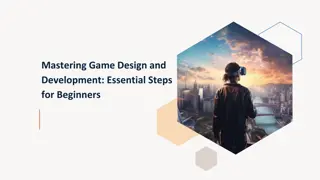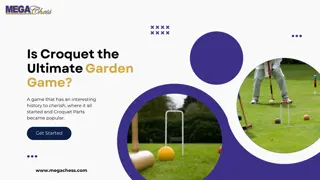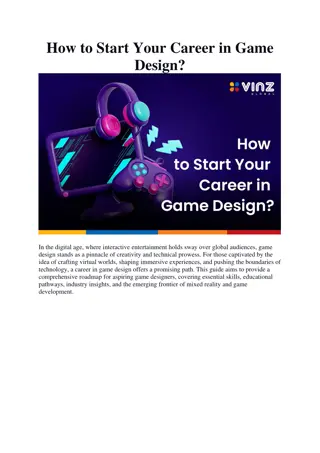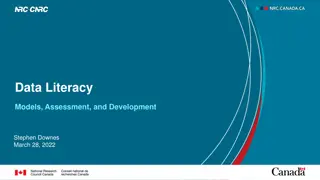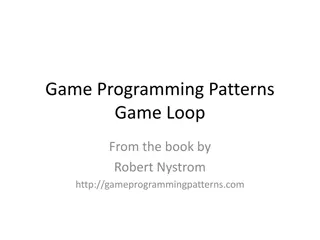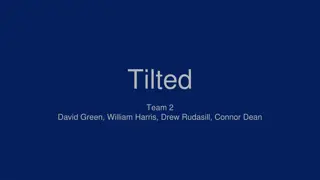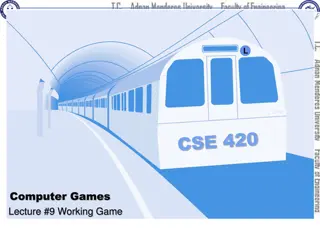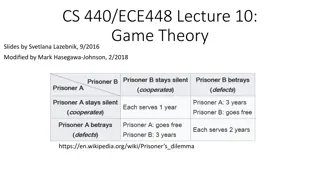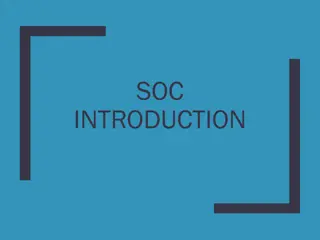Exploring Holistic Components in Game Design Frameworks
This content delves into a game play-centric component framework that encompasses various elements such as holistic components, bounding components, temporal components, and structural components. It discusses the setup and execution of game sessions, different modes of play, player goals, events, actions, and evaluation functions. Additionally, it explores the evolving nature of games with each play instance, considering factors like player experiences, external circumstances, and playing time. The concept of extra game activities is also highlighted, showcasing how activities beyond gameplay can enhance the overall gaming experience.
Download Presentation

Please find below an Image/Link to download the presentation.
The content on the website is provided AS IS for your information and personal use only. It may not be sold, licensed, or shared on other websites without obtaining consent from the author. Download presentation by click this link. If you encounter any issues during the download, it is possible that the publisher has removed the file from their server.
E N D
Presentation Transcript
A game play-centric component framework of games 1 3 2 Holistic components Bounding components Temporal components Structural components 4 Page 414
Play session Game instance Game session Extra game activitiesce Set up and set down session Rules Modes of play Goals and subgoals Closures Events Actions End conditions Evaluation functions Players Interface Game facilitator Game time Game elements
Holistic components Game instance Game session Set up and set down session Game play Extra game activities
xxx xx xx xx xx
Holistic components Game instance Digital platform Every time a game is played it is unlike previous times, either in: constitution of the game the experience of the game s players The external circumstance Playing time Page 415
Holistic components Game session The activity undertaken in a game instance by the game s players. The actual time a game session lasts varies from game to game Page 415
Holistic components Play session The completion of a game session can be divided into several distinct periods of gameplay activity, that are typically much shorter than the periods of time between them Quest struktur der underst tter en faseinddeling Games that takes hours to complete: to find the required time, players divide this time into smaller units. Page 415
Holistic components Extra game activities Activities done because a game exists and not directly related to playing the game itself It can be bragging about highscore list Spillet kan underst ttes af refleksive logs der hj lper den studerende til at forst egen udvikling The designer can provide mechanics within the game to support extra-game activities which can have an impact on the overall gameplay experience Page 416
Holistic components Set up and set down session Game instance and game-, play session have specific phases where the activities that takes place do not constitutes gameplay directly. These includes preparing for playing by; Placing tokens Deciding set-ups Noting game states e.g. Page 416
Bounding components Rules Rules dictate the flow of the game. They can be endogenous (explicit) or exogenous (implicit) There are rules that govern what the game elements are, how they behave, what actions players can perform e.g. Breaking up rules openly ends game activities, or requires a reformulation Page 417
Bounding components Modes of play Games are typically structured to have different sections, phases or turns where the interface, available actions information for the players changes Switching from a map view to an inventory screen How many modes of play depends on the level of detail Page 417
Bounding components Goals and subgoals The aim of players plan and action are described as trying to complete goals Many games give players several goals, where progress in completing one goal makes it difficult to complete the other Goals in more complex games are often split into smaller subgoals Page 417
Temporal components Actions A player can change the game state by performing actions. Depending on the game, an action can either be continuous or discrete, that is, temporally defined by either its relation to real time or its relation to other action Page 418-419
Temporal components Events Events are most typically triggered by the completions of players actions In computer games it can be triggered by a mechanical means, such as a sandglass Page 418-419
Temporal components Closures The completion of a goal or a subgoal results in a closure Closure also occurs when players openly recognize that a goal is no longer achievable or when certain deterministic game events occur Page 418-419
Temporal components End conditions End conditions specify the game state when closures occur and, most importantly, when the game instance ends it can be accompanied by an evaluation function Page 419
Temporal components Evaluation functions The outcome of an event, such as the winner at the end of a game instance, is determined by an evaluation function Thus closure can cause evaluation functions to be determined Page 419
Structural components Game facilitator Game facilitators are responsible for keeping the game state synchronized, making the necessary changes created by player actions - Taking care of the game event - Informing the player about the officially approved methods of playing - Observing that the rules are being followed Page 420
Structural components Players Players are the entities that strive toward the goal in a game. They need not to be human beings. The oppnents controlled by the computer can be viewed as other players In some games the player is manifested by an avatar Page 420
Structural components Interface Players have access to the game through an interface, where game element are represented as token, which come in different types and forms and can be manipulated in a wide variety of different ways. In digital games these are manipulated by keyboards, mouse e.g. Page 420
Structural components Game time The action in a game can be ordered sequentially on a timeline to describe what happens during the game time Not all games depend on the exact time an action is completed so long as it is completed in its position in the sequence The timeline of actions does not always have to be measured in real time Page 421
Structural components Game elements The physical and logical attributes that help maintain and inform players about current game state - Can represent players (avatar) - Represent entities that can perform actions (NPC) - Define the action available to players e.g. Page 421
